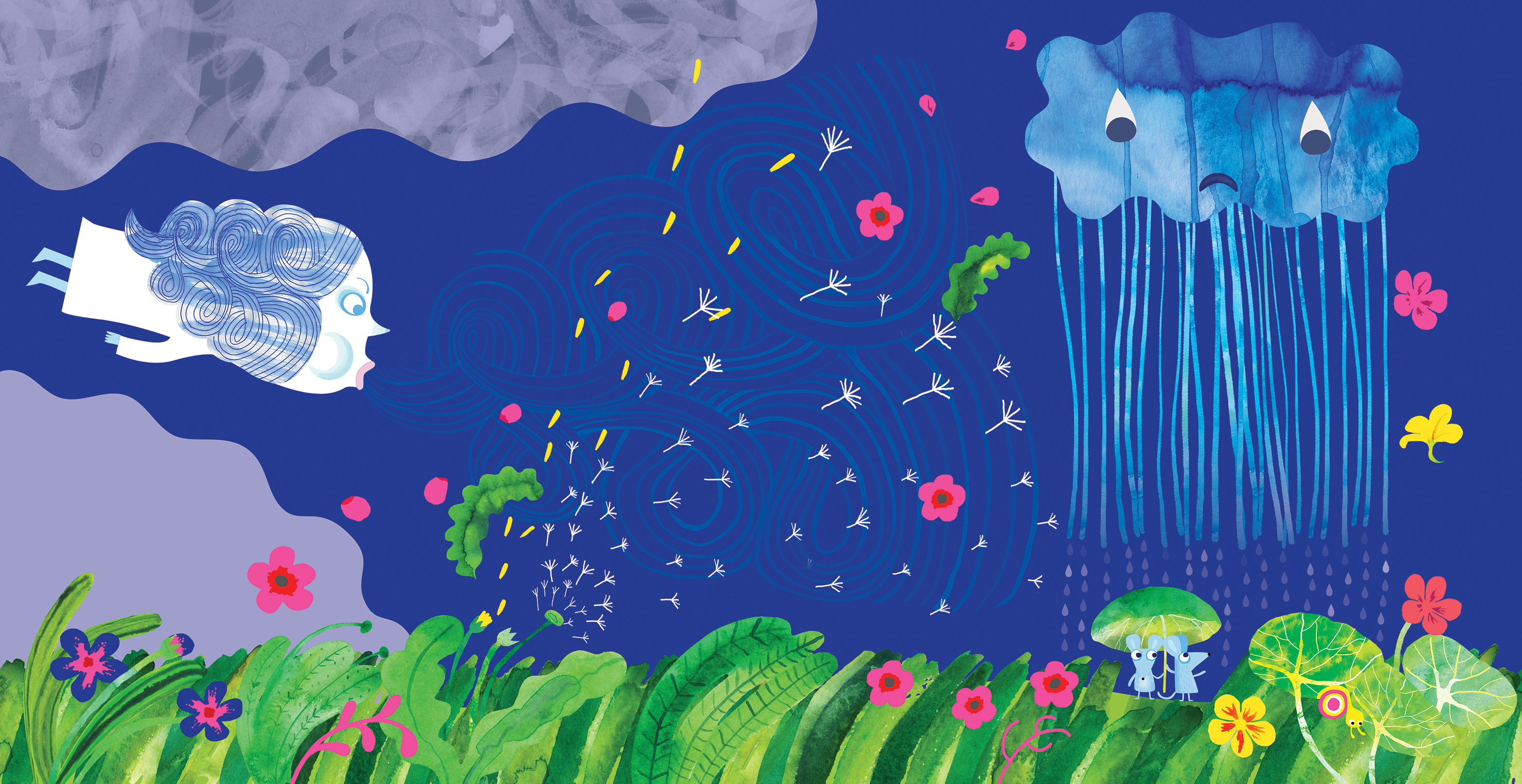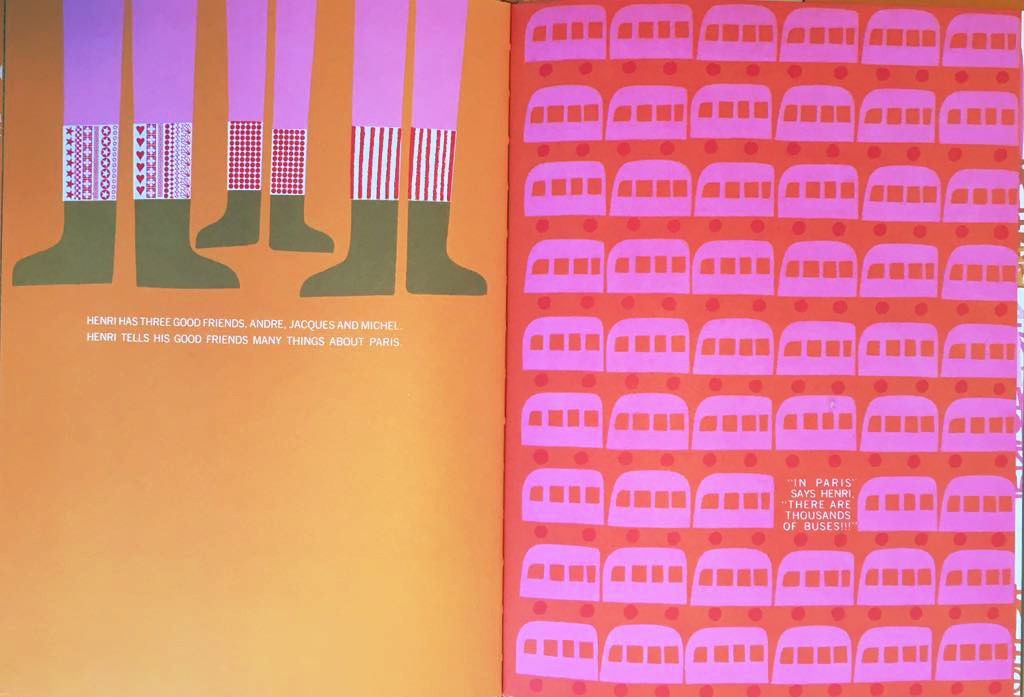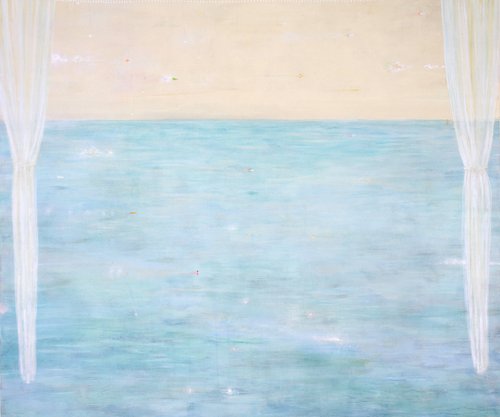Children’s book author and designer Vasanti Unka reckons that we could do better with our use of the colours from our multicultural surrounds. We have the world at our fingertips – so why aren’t we using it? Vasanti’s new book Who Stole the Rainbow? is out from Puffin NZ this month.

As a picture book creator I like to think of my work as an exploration in visual language. I stew over each page – carefully aware – that picture books have the potential to develop the emotional intelligence and creativity of children and open up the world around them. Life is not all black and white. Visit any school in Auckland – each child a blend of many ethnic influences, many lifestyles – multicoloured. My own life is in varied tones of light to dark. I can’t help but reflect this in my work.
And so, I worry. The Children’s Book market isn’t easy – especially in New Zealand, which is such a tiny country. So when it comes to illustration and design, by attempting to appeal to the widest audience possible, I wonder if we are creating a visual-blandness. We safely redo styles that have worked in the past and we are scared to innovate. I’m worried that this process not only dilutes great ideas, it homogenises a wealth of cultures.I don’t think our illustrators and designers are at fault. They are gifted and talented – I admire them all. Take a look at some of our heavyweight designers and illustrators, the ones we would consider iconic, and we can see a history of original and distinctive styles.
Take a look at some of our heavyweight designers and illustrators… we can see a history of original and distinctive styles.
It’s not simply a matter of getting some dark faces on our pages. It’s more about style and moving away from an Americanised ideal of style. Of moving towards style with more substance – perhaps with an absence of Photoshop perfection or Disney shimmer. A style that is unique.
I look at Lynley Dodd’s books, some illustrations are in a quirky graphic style, others are softer and more realistic. These illustrations are not begging to appeal to our adoration of ‘cuteness.’ The same goes for Peter Gossage’s and Jill McDonald’s work. The look is often minimal, the composition tight, all is not revealed, yet their work carries a visceral power – they have ‘soul’ – and they leave space for young imaginations to grow.

To me, their work is not only innovative for the zeitgeist they worked in but more importantly, the reason for their timelessness is that their work is culture-defying. They are not perpetuating a mono-cultural perspective of life.I have been looking recently at the latest Bologna Illustrators Catalogue. To me, these illustrations are brimming with fresh ideas – they are like poetry in the way they expand my way of thinking and unravel new perspectives. A myriad of styles, techniques and mediums are explored. Illustrators have reached across the globe for inspiration. I’m enjoying the work of Roger Mello, Violeta Lópiz, JooHee Yoon and Emma Lewis for their boundary-pushing.
A myriad of styles, techniques and mediums are explored. Illustrators have reached across the globe for inspiration.
We have the world at our fingertips, so why aren’t we all using it?Let me explain further. I am often told I use colours from India. Maybe I do, but I have actually been influenced by a palette of cultures and experiences in various hues.
My greatest design influences came from the German Jews, Russians and Swiss who left war torn countries to foster modernism in the USA. I’ve also spent time garnering pastel shades of blue and ideas on composition (notan) from the pages of Japanese art and design books.

Like most people in New Zealand, I am a mix of cultures. I was born in New Zealand (with Indian DNA) and have only frail links to my parents’ homeland. I also have links to Māori (with Māori brothers and sisters). Scary Māori superstitions were as much of a part of my childhood as Indian ones – hence my propensity towards personifying nature.
Yet I grew up in a white-Anglo-Saxon dominated environment, which I naturally conformed to. Or tried to – I can boast a lifetime of failing to fit into the Pākehā world – of being stereotyped. White privilege is subtle but real, I can give you many first-hand accounts of not being acceptable because of my brownness. The feeling of being an ‘other’ prevails. However, I don’t feel alone in this – my Māori contemporaries had their culture extinguished.
Being sensitive to the past and to another’s heritage is a soft shade of umber.
After reading Janet Frame’s biographical stories, I realised that white people can feel like an ‘other’ as well. Many of my Pākehā baby-boomer contemporaries have parents who escaped war-torn countries as refugees. Their stories are dark.
New Zealand society is a patchwork of shades – multicoloured and multicultural. So to me, it seems like a mandate. Our children’s book aesthetics should reflect many cultures and be depicted in diverse styles and mediums so that we can open up a bigger world to children, to learn that there is more than one way of seeing. And being.
Our children’s book aesthetics should reflect many cultures and be depicted in diverse styles and mediums so that we can open up a bigger world to children…
But while I believe it is essential to gather inspiration from lots of cultures in order to grow, I feel that with anything Māori, tread respectfully. The battle to regain that which was lost has been hard fought – don’t take the spoils again. I think there’s an urgency to encourage artists of Māori and Pasifika heritage. Because some colours are missing.
I know, we are working on it.
It’s been wonderful to see the growth in the number of diverse children’s books being published. At last, we are publishing more stories in Te Reo, more stories about Āotearoa: our people, our wildlife, our history. Books that contest the ‘Pākehā as the norm’ and gender stigmatising standards.
It’s taken many years, but I finally work with publishers that encourage my visual explorations. I love that we have niche publishers, all aiming to portray the many unique identities that make up this country. All of them taking a risk, with the view of changing an ingrained culture.
I love that we have niche publishers, all aiming to portray the many unique identities that make up this country.
I keep in mind a quote from Marcel Proust, “Thanks to art, instead of seeing one world only, our own, we see that world multiply itself and we have at our disposal as many worlds as there are original artists.”
Let’s stir the melting pot until it spills over.
Editors’ note: The Reckoning is a regular column where children’s literature experts air their thoughts, views and grievances. They’re not necessarily the views of the editors or our readers. We would love to hear your response to any of The Reckonings – join in the discussion over on Facebook.
Vasanti Unka
Vasanti Unka is a picture book creator. She writes, illustrates and designs books for children and for adults that refuse to grow old. The first picture book she ever created, The Boring Book, was named the 2014 NZ Post Margret Mahy Book of the Year. Vasanti is an Aucklander, she has a Masters degree in design, she tutors design, goes for long walks, loves her cat, loves making crafty things and playing her ukulele.



